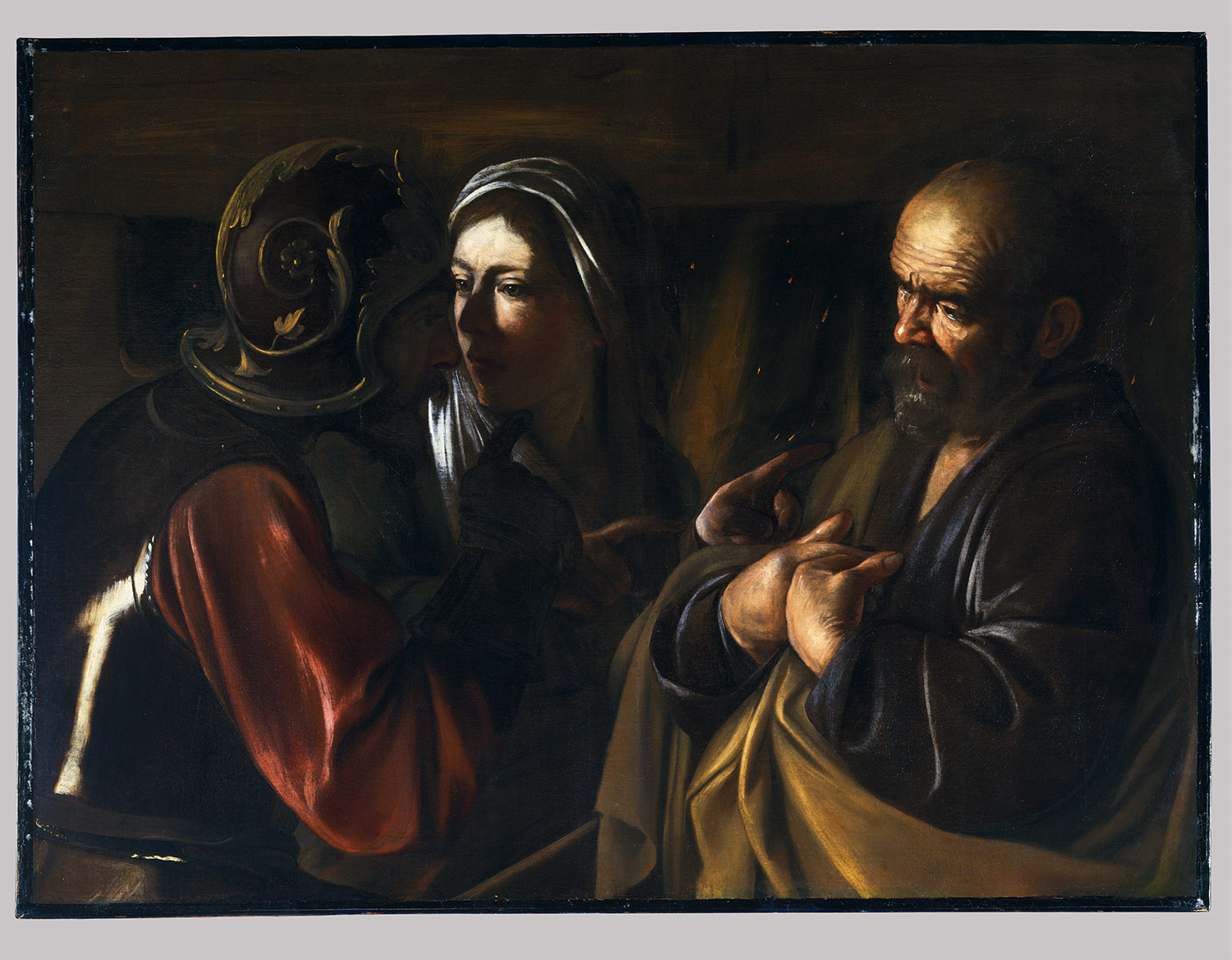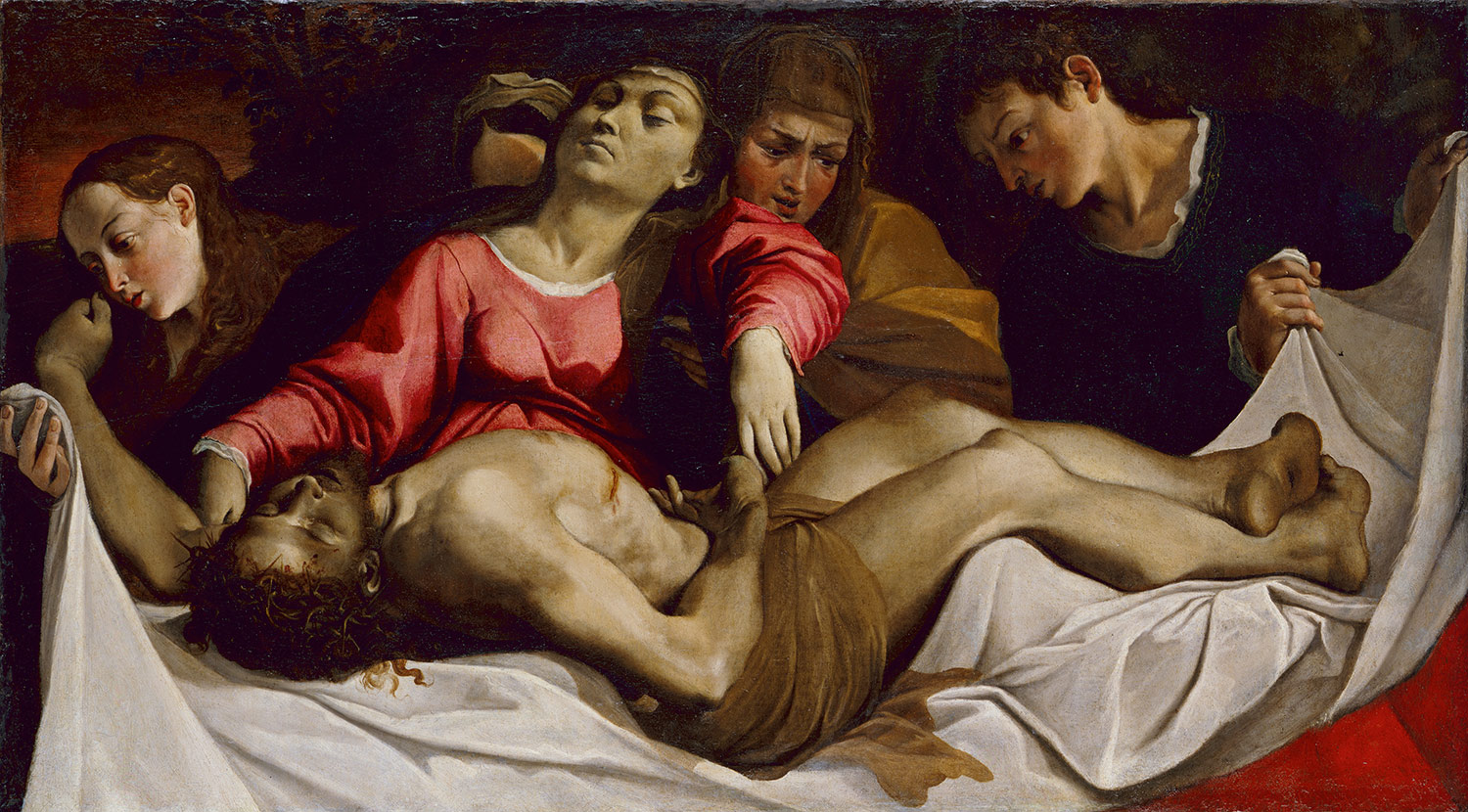
1. The Denial of St. Peter by Carravagio (~1624)
This piece depicts the biblical scene in which St. Peter is accused of being a follower of Christ by a maid servant. Peter, fearing for his safety, denies associating with Jesus three times. What struck me about the painting immediately was Carravagio's use of light. The soldier stands in darkness, the maidservant's eyes are lit, and Peter is fully lit. The lighting is dramatic because the background is devoid of any illumination and the artist used light to draw your eyes to certain locations, particularly the maidservant's face, which seems to show stress. St. Peter's face shows sorrow, fear and frustration. This is one of the most intimate depictions of The Denial of St. Peter as it focuses on only two people, the accuser and the accused.

2.Salvator Mundi by Domenico Fetti (~1622)
Christ is seated in the clouds, his left hand on an orb, his right raised in blessing, as he stares down toward us. The orb he is holding looks very much like Earth. The orb is a Christian symbol of authority, and is an artistic tradition that at the time of painting had been utilized for over a thousand years. This seems to be a very aristocratic depiction of Christ. His posture and mannerism reveals an air of royalty. Christ even has his foot resting on the head of one of the Cherubs. Perhaps Mundi depicted the “prince of peace” this way deliberately, knowing he was painting it for a Count.

3. The Lamentation by Ludovico Carracci (~1582)
It is not suprising that sixteenth century critics found this painting shocking when it was made. In it's honest and realistic depiction of Christ, it stands apart from every other piece in the galleries I viewed. This painting was much less colorful and fanciful than the others, and there were no halos to be seen. Christ seemed to be just a mortal man, and because of that it felt very intimate, almost like I was standing right there with the three maries. This painting stands in stark contrast with Fetti's depiction of Salvator Mundi. This was probably my favorite painting I viewed, precisely because it removed the royalty and distance from Christ – it showed his humanity.
No comments:
Post a Comment